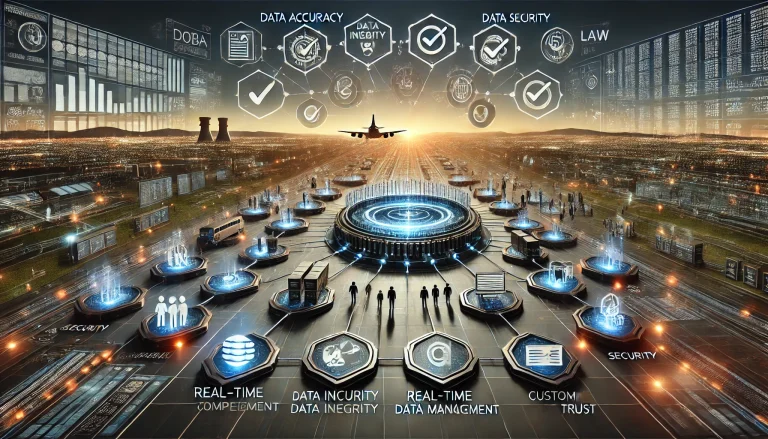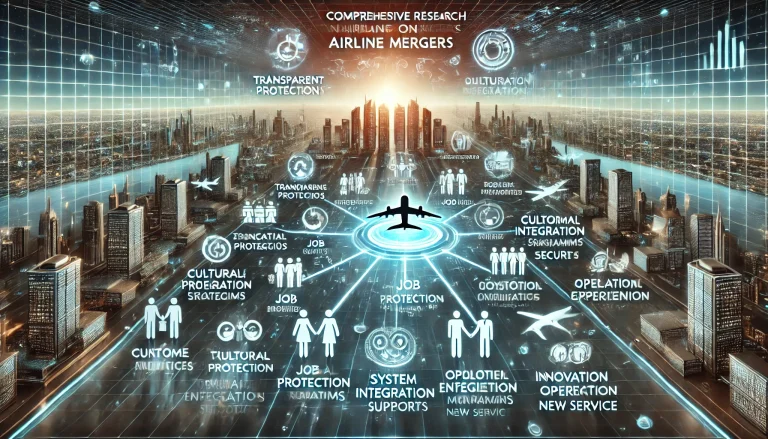Problem Statement
Ensuring passenger health and safety during flights has always been a critical responsibility for airlines, but this responsibility has taken on new urgency in the wake of global health concerns, particularly airborne diseases like COVID-19. Airlines must now implement stringent health protocols, manage air quality, and provide medical support during flights to protect passengers and crew. However, this must be done without compromising the comfort and overall experience of air travel, making the task even more challenging.
The spread of airborne diseases poses significant risks in the confined environment of an aircraft, where passengers are in close proximity to one another for extended periods. To mitigate these risks, airlines have introduced various health and safety measures, including enhanced cleaning protocols, the use of HEPA filters to improve air quality, mandatory face masks, and social distancing during boarding and deplaning. While these measures are essential for safety, they can also impact the passenger experience, leading to discomfort, anxiety, and dissatisfaction.
Air quality management is a key area of focus, as the air inside an aircraft must be continuously filtered and circulated to reduce the risk of airborne transmission. Modern aircraft are equipped with HEPA filters that can capture up to 99.97% of airborne particles, including viruses and bacteria. However, maintaining optimal air quality requires careful monitoring and regular maintenance of the aircraft’s ventilation systems.
In-flight medical support is another critical component of ensuring passenger health and safety. Airlines must be prepared to respond to medical emergencies, including those related to infectious diseases. This includes training cabin crew in first aid and disease prevention, equipping aircraft with medical supplies, and establishing protocols for handling sick passengers.
Balancing these safety measures with passenger comfort is a complex challenge. While passengers want to feel safe, they also expect a pleasant travel experience. Airlines must find ways to implement health protocols in a manner that minimizes disruption and maintains a high level of service. This may involve redesigning in-flight services, offering flexible seating arrangements, and enhancing communication with passengers to reassure them about the safety measures in place.
Addressing these challenges requires a holistic approach that prioritizes both safety and comfort, ensuring that passengers can travel with confidence and peace of mind.
Pain Points
- Airborne Disease Risks: The potential for airborne transmission of diseases in the confined environment of an aircraft.
- Air Quality Management: Ensuring that air inside the aircraft is continuously filtered and circulated to reduce the risk of disease transmission.
- Stringent Health Protocols: Implementing and enforcing health measures such as face masks, social distancing, and enhanced cleaning.
- In-Flight Medical Support: Providing adequate medical support and emergency response capabilities during flights.
- Passenger Comfort: Balancing safety measures with the need to maintain a comfortable and enjoyable passenger experience.
- Anxiety and Discomfort: Managing passenger anxiety and discomfort associated with health protocols and safety measures.
- Communication Challenges: Effectively communicating health protocols and safety measures to passengers without causing alarm or confusion.
- Operational Disruptions: Addressing the operational challenges posed by the implementation of stringent health and safety protocols.
- Regulatory Compliance: Ensuring compliance with evolving health regulations and guidelines from international and local health authorities.
- Cost Management: Balancing the costs of implementing health and safety measures with maintaining profitability and competitiveness.

Future Vision
Our platform envisions a future where airlines successfully balance stringent health protocols with maintaining passenger comfort and satisfaction. To achieve this, the platform will support the implementation of advanced health and safety technologies, enhanced air quality management systems, and comprehensive in-flight medical support programs.
Airlines will be encouraged to invest in state-of-the-art air filtration systems, such as HEPA filters, and to regularly monitor and maintain these systems to ensure optimal air quality on every flight. The platform will also advocate for the development of new technologies that can further reduce the risk of airborne disease transmission, such as ultraviolet (UV) disinfection systems and antimicrobial surfaces.
In-flight medical support will be strengthened through comprehensive training programs for cabin crew, ensuring they are equipped to handle a wide range of medical emergencies, including those related to infectious diseases. Airlines will be encouraged to carry advanced medical equipment and supplies on board and to establish clear protocols for managing sick passengers and potential outbreaks during flights.
Passenger comfort will remain a key focus, with airlines implementing flexible seating arrangements, redesigned in-flight services, and enhanced communication strategies to reassure passengers about the safety measures in place. The platform will promote the use of personalized health and safety options, allowing passengers to choose their level of comfort and protection based on their individual needs.
Effective communication will be critical in maintaining passenger confidence. Airlines will be encouraged to provide clear, consistent, and transparent information about health protocols, both before and during flights. This will include digital communication channels, such as mobile apps and in-flight entertainment systems, to keep passengers informed and engaged.
By addressing these challenges and prioritizing both safety and comfort, our platform aims to help airlines create a travel experience that is not only safe but also enjoyable and reassuring for passengers. This approach will build trust, enhance customer satisfaction, and ensure the long-term success of the airline industry in a post-pandemic world.
Use Cases
- Advanced Air Filtration Systems: Implementing and maintaining HEPA filters and other air quality management technologies to reduce the risk of airborne disease transmission.
- In-Flight Medical Training: Providing comprehensive medical training for cabin crew, including first aid and infectious disease management.
- Flexible Seating Arrangements: Offering passengers the option to choose seating arrangements that align with their comfort and safety preferences.
- UV Disinfection Systems: Investing in ultraviolet disinfection technologies to sanitize aircraft interiors and reduce the spread of pathogens.
- Antimicrobial Surfaces: Incorporating antimicrobial materials into aircraft interiors to prevent the growth of bacteria and viruses.
- Personalized Health Options: Allowing passengers to customize their health and safety experience, such as selecting mask types or requesting additional cleaning services.
- Enhanced Communication Strategies: Using digital communication tools to provide clear and consistent information about health protocols and safety measures.
- Real-Time Air Quality Monitoring: Implementing systems that continuously monitor and report on air quality during flights.
- Regulatory Compliance Tools: Developing tools and platforms to help airlines stay compliant with health regulations and guidelines.
- Cost-Effective Health Measures: Finding ways to implement health and safety measures that are both effective and economically sustainable for airlines.
Target Users and Stakeholders
- User: Airline Safety Managers, Operations Teams, Medical Support Staff, Customer Experience Managers, and IT Teams
- Age Group: 30-60 years
- Gender: M/F
- Usage Pattern: Regular usage for implementing and managing health protocols, air quality systems, and in-flight medical support
- Benefit: Enhanced passenger safety, improved air quality, and a balance between safety and comfort
- Stakeholders:
- Airlines: Companies that need to implement health protocols and maintain passenger safety while ensuring comfort and satisfaction.
- Passengers: Individuals who expect a safe and comfortable travel experience with effective health measures in place.
- Health Authorities: Regulatory bodies responsible for setting and enforcing health and safety standards in aviation.
- Technology Providers: Companies offering advanced health and safety technologies, such as air filtration systems and UV disinfection.
- Medical Professionals: Experts who provide training and support for in-flight medical emergencies and health protocols.
Key Competition
- Boeing: Innovating in air quality management and safety systems for commercial aircraft.
- Airbus: Focuses on integrating advanced health and safety technologies into aircraft design and operations.
- Honeywell Aerospace: Provides air quality management systems and UV disinfection technologies for aviation.
- Collins Aerospace: Offers a range of health and safety solutions, including advanced air filtration and antimicrobial surfaces.
- Lufthansa Technik: Specializes in aircraft maintenance and retrofitting, including the installation of health and safety systems.
Products/Services
- Boeing Air Quality Management: Implementing advanced HEPA filters and air circulation systems to enhance in-flight air quality.
- Airbus Health and Safety Technologies: Integrating health protocols into aircraft design and operations to ensure passenger safety.
- Honeywell Aerospace UV Disinfection: Offering ultraviolet disinfection systems to sanitize aircraft interiors and reduce pathogen spread.
- Collins Aerospace Antimicrobial Surfaces: Providing antimicrobial materials for aircraft interiors to prevent bacterial and viral growth.
- Lufthansa Technik Aircraft Retrofitting: Retrofitting aircraft with the latest health and safety technologies, including air filtration and medical support systems.
Active Startups
- PureFly: Specializes in advanced air filtration and disinfection technologies for commercial aircraft.
- AeroClean: Develops UV disinfection systems and antimicrobial coatings for aviation and other industries.
- SkyHealth: Focused on in-flight medical support solutions, including training programs and medical equipment for cabin crew.
- AetherAir: Provides real-time air quality monitoring systems that can be integrated into aircraft ventilation systems.
- FlyClean: Innovates in eco-friendly cleaning solutions and practices for the aviation industry, focusing on health and safety.
- MedAero: Offers medical consulting and support services for airlines, including emergency response protocols and training.
- AirSafe: Develops software solutions for tracking and managing regulatory compliance with health and safety standards.
- FlightSafe: Provides wearable health monitoring devices for passengers, offering real-time data on vital signs and health status.
- CleanJet: Focuses on developing portable disinfection devices that can be used in aircraft cabins between flights.
- HealthJet: Specializes in personalized health and safety solutions for airlines, allowing passengers to customize their in-flight experience.
Ongoing Work in Related Areas
- Air Quality Research: Exploring new technologies and practices to enhance air quality and reduce the risk of airborne disease transmission on flights.
- Health Protocol Development: Developing and refining health protocols and safety measures to ensure passenger well-being during air travel.
- Medical Training Innovations: Innovating in training programs and tools to equip cabin crew with the skills needed to handle in-flight medical emergencies.
- Passenger Comfort Studies: Researching ways to balance safety measures with passenger comfort, ensuring a positive travel experience.
- Regulatory Compliance Solutions: Creating tools and platforms to help airlines navigate and comply with evolving health regulations and guidelines.
Recent Investment
- PureFly: $10M in Series A funding led by aviation industry investors, January 2021.
- AeroClean: $7.5M in Seed funding led by health technology investors, September 2020.
- SkyHealth: $5M in Series A funding led by venture capital firms specializing in health and aviation, March 2021.
- AetherAir: $8M in Series A funding led by climate tech investors, June 2021.
- FlyClean: $3.5M in Seed funding led by eco-friendly technology investors, November 2020.
Market Maturity
The market for health and safety solutions in aviation is rapidly maturing, driven by the need to protect passengers and crew in the wake of global health concerns. Companies like Boeing, Airbus, and Honeywell Aerospace are leading the way with advanced air quality management systems, UV disinfection technologies, and antimicrobial surfaces. Startups like PureFly, AeroClean, and SkyHealth are pushing the boundaries of innovation with new solutions for in-flight health and safety, including air filtration, medical support, and real-time air quality monitoring. Significant investments in air quality research, health protocol development, and medical training innovations are transforming the aviation industry, enabling airlines to implement effective health measures while maintaining passenger comfort and satisfaction. As the market continues to evolve, we expect to see more integrated and advanced solutions that ensure a safe and enjoyable travel experience for all passengers.
Summary
Ensuring passenger health and safety during flights is a major responsibility for airlines, especially with the recent focus on airborne diseases. Airlines must implement stringent health protocols, manage air quality, and provide medical support during flights. Balancing these safety measures with maintaining a comfortable and enjoyable experience for passengers is a challenging task. Our proposed platform leverages advanced air filtration systems, in-flight medical training, flexible seating arrangements, UV disinfection technologies, antimicrobial surfaces, personalized health options, and enhanced communication strategies to address these challenges. Key pain points include airborne disease risks, air quality management, stringent health protocols, in-flight medical support, passenger comfort, anxiety and discomfort, communication challenges, operational disruptions, regulatory compliance, and cost management.
Target users include airline safety managers, operations teams, medical support staff, customer experience managers, and IT teams, with stakeholders encompassing airlines, passengers, health authorities, technology providers, and medical professionals. Key competitors like Boeing, Airbus, Honeywell Aerospace, Collins Aerospace, and Lufthansa Technik offer various health and safety solutions, while startups such as PureFly, AeroClean, and SkyHealth are driving innovation in air filtration, UV disinfection, and in-flight medical support. Recent investments highlight significant interest and growth potential in platforms addressing health and safety challenges in aviation.
By addressing these challenges and leveraging advanced technologies and safety protocols, our platform aims to create a travel experience that is not only safe but also enjoyable and reassuring for passengers. This approach will build trust, enhance customer satisfaction, and ensure the long-term success of the airline industry in a post-pandemic world.



